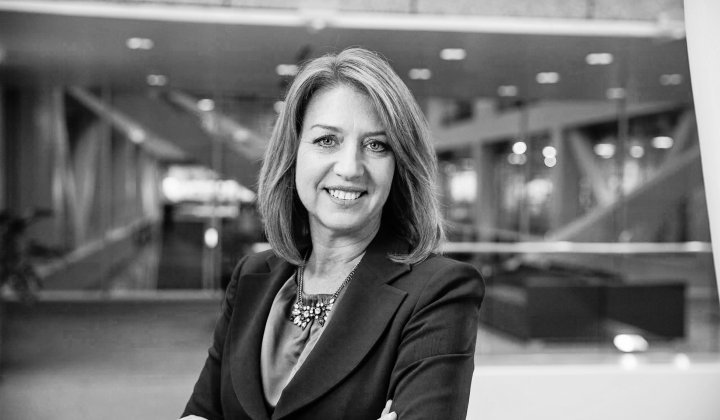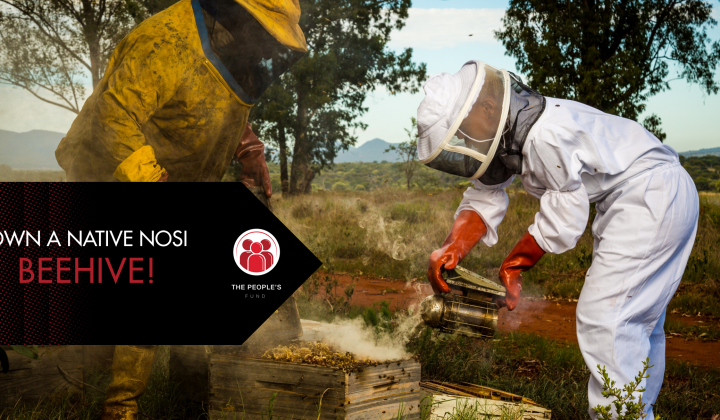Once a year, the South African science community descends upon the Council for Scientific and Industrial Research (CSIR) in Pretoria for a science and research extravaganza. But while the general tone of Science Forum South Africa is the same – “Look how cool our science is. Imagine what we could do if we had more money” – each year has its own as distinctive character.
Now in its third year, 2017 was all about the impact of science and showing that impact. Science and Technology Minister Naledi Pandor, in her opening address, said that one of the objectives of the forum was to “put science at the service of African society”. “Science is an integral part of the African growth and development agenda.”
That is what science ministers, heads of state, and the African Union keep saying, but the numbers show that the reticence to put money on the table continues to constrain home-grown research.
Research and development (R&D) expenditure has been linked to economic development and job creation, but political buy-in hinges on more than an abstract academic link. The golden number in research policy circles is GERD, the percentage of gross domestic product spent on R&D. And the rationale goes something like this: The more money a country – and its companies and universities – spends on R&D, the more competitive it becomes when compared to other countries that are not spending that money.
Africa's lagging
South Africa, at Pandor’s behest, has been chasing a target of 1.5%, but reality continues to fall short of this aspirational target. The country’s GERD has continued to inch up, reaching 0.8% in 2015-16, its highest level since 2009-10, but that is more due to the dramatic slowing of South Africa’s GDP growth, as opposed to a rush to invest in R&D. The country is part of the continental trend: other African countries are all below the 1% threshold, even though South Africa’s economy – and its R&D spend – is substantially larger than most of theirs. But it is still lagging the countries it competes with internationally. Countries within the Organisation for Economic Co-operation and Development, for example, on average spend about 2.4% of their substantially larger GDPs on R&D.
The Department of Science and Technology, a major funder of research in South Africa, got R7.5 billion for the 2017-18 financial year. While the figure is constant in nominal terms, it has not kept up with inflation or with the country’s weak currency. In South Africa, government continues to spend more on R&D than business, continuing a trend of business’s reticence to invest. This makes it slightly more difficult for proponents of increasing R&D spend. Since it is government money going towards R&D, they must sell science and R&D as something that benefits people on the ground.
“We need to demonstrate the practical value of science, technology and innovation,” Sarah Anyang Agbor, the African Union commissioner for human resources, science and technology, said at the Science Forum opening. “We fail in our duty as government and policymakers if we do not deliver to the people who look up to us.”
Science and politics
But perhaps the greatest boost for R&D – and for the push to develop and grow the cohort of young scientists in the country and on the continent – was the presence of the country’s deputy president and African National Congress presidential hopeful Cyril Ramaphosa.
“We have a responsibility to develop a community of young people that believe there is a future for science in South Africa and the continent,” Ramaphosa told the opening plenary. “We should never let the constraints of poverty and underdevelopment extinguish the imagination of our people.”
The Science Forum “must rekindle hope in a world of unending possibilities, a world where imagination, innovation, and scientific discovery allows us to dream of a better, more secure, more equitable future”, he said. “But we must not just talk – there needs to be a lot more action on our part to allow them to work and play in this Fourth Industrial Revolution. It must be an inclusive revolution.” It’s hoped that the Fourth Industrial Revolution – in which the complexity of digital technologies fundamentally rewrites the way that business and the world work through the likes of artificial intelligence and machine learning – will allow developing countries, such as those on the African continent, to leapfrog from largely agrarian-based economies to more sophisticated and diversified ones.
Back to school
But this is dependent on money – training students, performing research (particularly in the science where things tend to be expensive, especially when equipment and journals are bought in pounds, dollars and euros). And in an economic environment in which the South African government is the major funder of R&D, that hinges on convincing Treasury and politicians that science can fix problems.
Having taken this pro-science stance, explicitly backed by Ramaphosa, on the final day of the forum Pandor announced that her department would be offering members of parliament “science policy orientation courses”, with a view to expanding these courses to parliamentarians in other Southern African Development Community countries.
“As political support and appreciation of science is critical… We will be facilitating a science and technology policy orientation course for parliamentarians early in 2018,” she told the audience in Pretoria. While her explicit goal was to see “a significant rise in the number of parliamentarians participating in next year’s forum”, the science community is holding thumbs that science classes for MPs will do much more: rustle up political support for disciplines that are often seen as elite and detached from the lived reality of the majority of South Africans.
“Countries within the OECD, for example, on average spend about 2.4% of their substantially larger GDPs on R&D”
“We should never let the constraints of poverty and underdevelopment extinguish the imagination of our people”
Bookended by Ramaphosa’s pro-science call to action, and Pandor’s end of conference announcement that MPs would be sent to science classes, 2017’s Science Forum sessions were all about practical impact, such as using space technologies to develop African countries.
Space in Africa
“It’s not about satellites,” South African National Space Agency (SANSA) chief Val Munsami told one session. “The satellites are a means to an end.” Ultimately, the goal of space technologies is to serve users’ needs, whether that is the space industry, government entities or people on the ground. “It’s about addressing human needs. That’s where you start.”
Africa is the second-largest continent; it comprises 55 countries, and about 40% of its citizens live in poverty even though it has 30% of the world’s mineral wealth. It also has poor infrastructure and a scarcity of scientific skills and technical equipment. That makes it difficult to survey what resources the continent has and to map development.
Therefore, space technologies and science have been held up as an answer to solve this difficulty: satellites can canvas areas faster and more effectively than an individual person in a bakkie, and the sensor payloads also mean that satellites can “see” things that the human eye can’t, from plant health to the extent of mineral deposits.
According to Munsami, users on the African continent – whether they are companies or government agencies – want free and open-source solutions, but they also want to be custodians of their data. “This is a problem,” Munsami says, as images are traditionally the property of the satellite owner.
South Africa, which has tentative plans to put up EO-Sat1 (Earth Observation satellite 1) in 2020, wants to make its satellite data available to other African countries. In 2010, when the National Space Strategy was published, it noted that “SA is increasingly reliant on space-based services and applications, particularly those in the domain of satellite Earth observations, communications and navigational positioning and timing”. It is even more reliant on these services and international satellites, as its citizens rely on them.
EO-Sat1, which has a budget of about R500 million, will form part of the African Resource Management Constellation, a collection of earth observation satellites launched by Kenya, Nigeria, Algeria and South Africa. Despite the four countries agreeing to the constellation as far back as 2009, it is still not operational. Munsami says that EO-Sat1 will still be included in that constellation once it is launched. “It’s not just for South Africa. It’s for Africa, and the data coming out of these satellites should be made available for Africa.”
The African Union (AU) also has big plans for space in Africa. Last year, its heads of state adopted a space strategy to guide and consolidate the continent’s space agenda. The aim of this strategy, says the AU Commission’s Hambani Masheleni, is to “derive socioeconomic benefits that improve the lives of our people and create wealth” so that Africa can become part of the space race. “We need to be able to launch our own space programmes,” he said.
Currently Ghana and Egypt are vying to host the African Space Agency, with the possibility of other countries throwing their hats into the ring. South Africa has chosen not to bid to host the agency but is driving a space institution council to get countries which already have space agencies to work together on joint programmes.
At the moment, African countries are not major players in the space industry. That’s not to say we don’t have a footprint – the likes of South Africa, Nigeria, Algeria and Egypt, among others, have space programmes or intentions. But no African country is seriously considering starting a Mars colony or going to the Moon.
Take the CubeSat industry, for example. CubeSats, nanosatellites which can be as small as a handspan across, can be built and launched for as little as $200 000, which is substantially less than the millions of dollars required for traditional satellites. “There’s been a huge expansion in CubeSat launches,” says the Department of Science and Technology’s Humbulani Mudau. As of 11 December 2017, 810 CubeSats had been launched, according to global nanosatellite database www.nanosats.eu. But Africa only accounts for 1% of those launches, compared to the United States and Europe which together are responsible for about 80% of them.
To grow their space footprint, African countries needed to respond to local needs, Mudau said. “National space policies and strategies are important. Countries have different requirements and means, and for us to participate effectively, we have to have our own policies so that we can contribute.”
SANSA’s Managing Director for Earth Observations Andiswa Mlisa notes: “If we are not strong at a national level, there is no way we can contribute at a regional level… And we have to remind ourselves why we are doing this”: to improve people’s lives and living conditions through space technology.
However, a major stumbling block to space in Africa is funding. “You need political will,” Munsami said. And to get that, you need to demonstrate the socioeconomic benefits. That is the only way that governments will prioritise funding.
“...satellites can ‘see’ things that the human eye can’t...”




